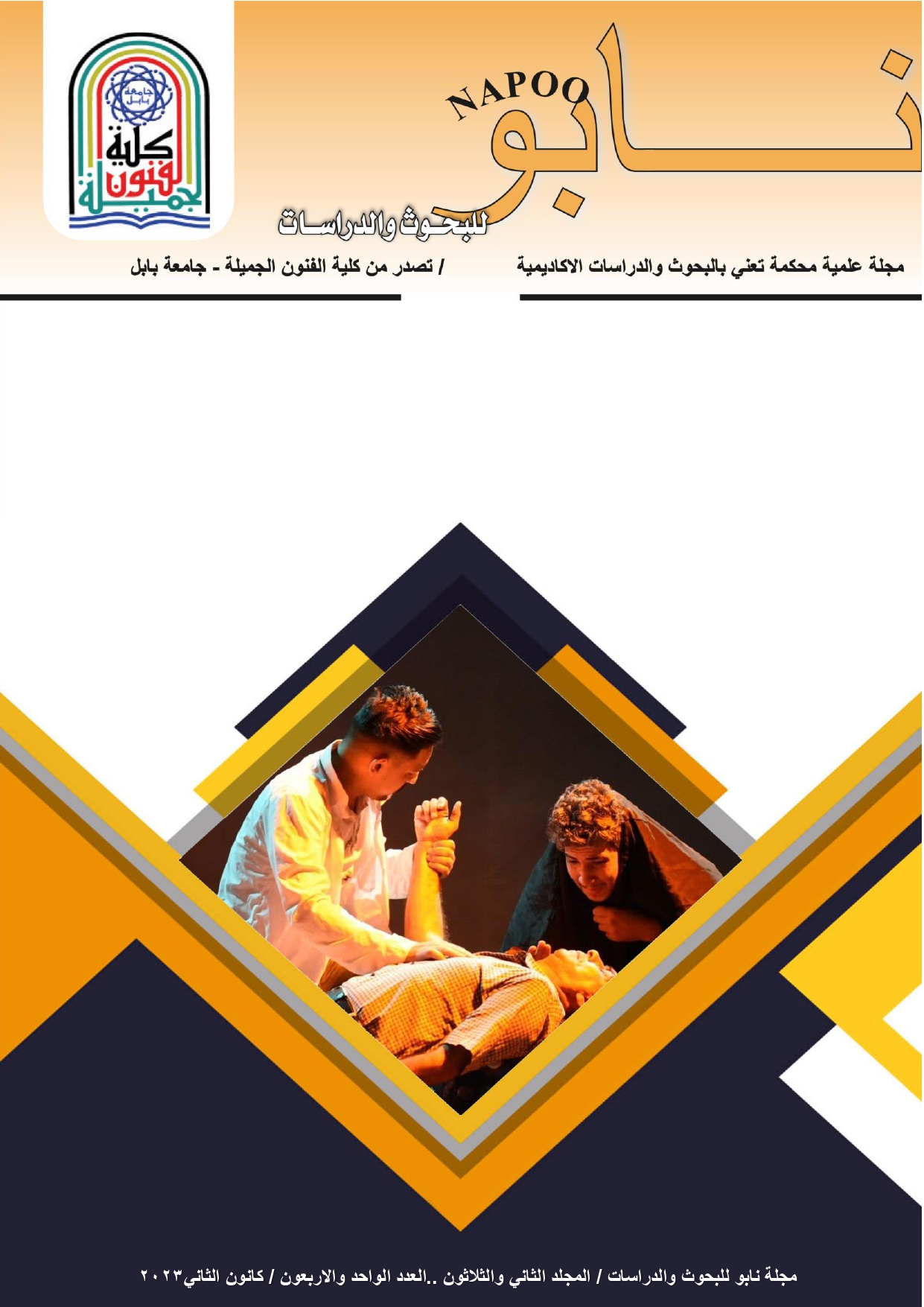Theatrical text language and its role in creating the visual image: The images of shock and surprise as a model study in selected texts from the contemporary Arab child theater
Abstract
Abstract
The aim of the research is to shed light on the language of the theatrical text and its role in creating the visual image: the two images of Trauma and astonishment as a model, and by applying it to selected texts from the contemporary Arab child theater. The research sample consisted of four theatrical texts, and the research concluded with a number of conclusions, the most important of which are: that the language in the studied theatrical texts was characterized by a very tight expressive intensity, which earned it the ability to depict the Trauma and astonishment cases accurately and clearly, both in terms of the choice of words or through stylistic tools, such as interrogative, repetition, similes and metaphors; And that the use of body language in depicting the states of Trauma and astonishment appeared in the studied texts in both the guiding text and the theatrical text. The language of the theatrical text in creating visual images of states of Trauma and amazement, and in conveying feelings and emotions and mental and psychological transformations that occur on the characters of the theatrical text to the recipient, which confirms that employing the elements of Trauma and surprise in the theatrical text requires a figurative language with a high ability to activate and empower the imagination of the recipient From experiencing situations and merging with them.
key words: Visual Image, Traumatisme, Astonishment, Children's Theater




